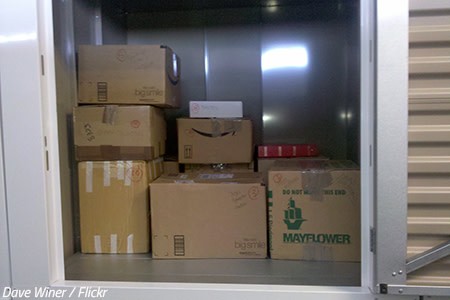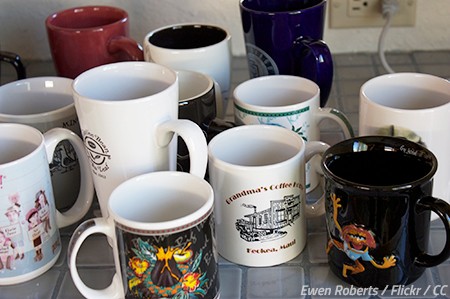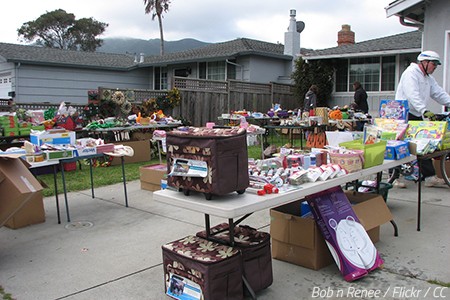Temporary storage can be a great option in certain transitional situations – for example, when you’re moving away temporarily or when you’re downsizing your home.
When the new place is not yet ready to receive your household items, then placing your stuff in storage can be an excellent solution to your current lack of sufficient space to keep your things.
However, before your things can go into a self-storage unit or into the hands of a moving company that will then store them at their own storage facility for delayed delivery as part of your requirements, those items of yours will need to be well prepared in order to survive the storage period without any sort of damage.
Here are 30 valuable tips for preparing items for storage in order to protect and pack your household goods in the best possible way.
1. GET the packing materials for packing your items for storage that you will need – packing paper, bubble wrap, moving blankets, strong cardboard boxes of similar sizes (easier to stack up), and different tools to dismantle appliances and furniture, if needed. This should be your very first task on your list when preparing items for storage.
2. INSPECT closely all cardboard boxes that you intend to use for storing your things. All cardboard containers have to be strong, dry (very important!), and without any signs of pre-existing damage or worrisome signs of infestation of any kind.
3. DO consider using durable plastic boxes to store your things, especially when you intend to store them for a long period of time. Plastic bins are generally more expensive than cardboard boxes, but they are reusable hundreds of times and provide an outstanding level of protection for your valuables.
4. USE soft wrapping paper when packing items for storage. The packing paper has to be acid-free and print-free. Do not use newspapers since the ink can transfer onto the surface of more delicate things and ruin them. Also, avoid placing items in plastic bags because plastic tends to trap moisture and may lead to the build-up of mold.
5. GO through all your belongings and decide on a case-by-case basis which items you will prepare for storage and which items you will simply discard for various reasons – too old, too worn out, too useless, or just too much of anything. Remember that items you are preparing for storage should all be things that you will need and use in the future.
6. GET rid of any items that are forbidden to be kept in storage facilities due to their hazardous nature. As a general rule, you are not allowed to pack for storage any items that are flammable, explosive, or corrosive. Also, you cannot store any types of foods, plants, or scented items.
7. CREATE an inventory list of all the things that you have decided to store away. This list will help you keep track of what you have in storage since it’s fairly easy to forget it during a rather chaotic move. Make a copy of the inventory list and keep it in a safe place.
8. START preparing your items for storage by following a few simple yet must-do tasks with priority. What you need to do first is to clean well all items that you plan to put into temporary storage. Use disinfectant wipes or an all-purpose cleaning product to wipe the surfaces of any furniture items or household appliances.
9. MAKE sure each and every item you place in storage is completely dry before you pack it and store it away. If not, then the risk of mold growth inside the storage unit increases dramatically. Mold is dangerous because it can spread fairly quickly onto other items and damage them as well.
10. CONSIDER treating any furniture upholstery and similar items made of leather with a special conditioning product intended for leather items. Leather conditioners will prolong the life of any soft furniture and will provide extra protection for such delicate items during the storage period.
11. KEEP in mind that while preparing items for storage, you may need to disassemble some of the larger furniture items that you intend to store away. While it’s not usually recommended that you pay good money to move and store large and heavy furniture items, sometimes you have no choice, especially in the case of valuable antique furniture.
12. PLACE any fastening elements from the furniture disassembly task into sealable plastic bags, seal them well, and attach them to the furniture unit they belong to. This way, you’ll ensure that not a single screw, bolt, nut, washer, or dowel is lost during the highly transitional period of moving between two homes.
13. PREPARE furniture for storage by wrapping all of them in thick padding blankets – after all, they will be moved out of your home first, then loaded into a moving vehicle, then unloaded at a storage facility, and finally, taken inside a storage unit. After a specific period of time, that process will be repeated in reverse order so you have to make sure your furniture units are well protected against accidental damage.
14. CHECK whether the mattress you’re preparing for storage (if applicable) is 100% dry before you slip it into a special mattress storage bag. This check is very important in order to prevent the formation of mildew and mold over time since the large bed accessory will be placed inside a plastic protective bag. The durable polyethylene mattress protector will keep the mattress from dust, dirt, and moisture.
15. ENSURE that the mattress gets positioned flat into the storage unit as opposed to being placed on its ends or its sides. Mattresses are quite heavy and can easily get damaged by their own weight if they are positioned incorrectly inside the storage cell.
16. USE baking soda to clean up well the inside of any household appliance you wish to store for a certain amount of time. Naturally, before the cleaning step, refrigerators and freezers will need to be defrosted and dried up.
17. SECURE all cables and hoses of household appliances with bits of masking tape or cable ties, then wrap up the appliances completely with protective furniture blankets.
18. PACK electronic equipment in white, soft, and ink-free packing paper. Whenever possible, use anti-static bubble wrap over the initial paper layer as extra protection. In the best-case scenario, you will have kept the original boxes of your electronic devices and pack them up inside them. If not, use strong cardboard boxes of similar size.
19. BE aware of the fact that you should not leave any expensive electronics into the storage unit for safety reasons. Instead, keep those costly gadgets with you, especially when they are portable enough.
20. PREPARE your clothes for storage by either packing them up in large moving boxes or hanging them inside wardrobe boxes (for more expensive designer clothes). Wardrobe boxes will keep your expensive clothes wrinkle-free and dust-free until you get to hang them into the dresser in the new home.
21. BEAR in mind that clothes and fabrics are common items to be put in storage, especially when those pieces of clothing are seasonal – for example, winter clothes during a summer move.
22. PREPARE for storage your voluminous pieces of clothing (winter jackets, coats, etc.) by slipping them into vacuum bags and shrinking the volume of the entire bundle. Bedding items and draperies can also be stored in such vacuum bags to save valuable space in the storage unit.
23. PREPARE shoes for storage by first cleaning well the pairs, then drying them up completely, wrapping them up in soft packing paper, and finally packing them in either their original shoe boxes or cardboard containers of similar size.
24. ENSURE that any books you intend to store away are perfectly dry before packing them up. Feel free to leave them in a sunny room for a few days or switch on a humidifier in the room prior to arranging them FLAT into small to medium boxes. If you own any valuable books (possible volumes with leather covers), then wrap them carefully in soft acid-free wrapping paper.
25. BE extra careful when packing extra fragile items for storage – breakables such as china dishes or glasses, for example. The trick is to make sure each fragile item is wrapped up individually in packing paper. Remember that wrapping paper will absorb any moisture in the air and not trap it the way plastic packing materials do.
26. PREPARE framed artwork – paintings and pictures – for storage by making a big X with masking tape along the glass surface. This way, in case of accidental breakage of the glass, the glass pieces will be kept by tape and will not damage the actual artwork.
27. WRAP each piece of artwork in large sheets of acid-free and ink-free packing paper. Whenever needed, use cardboard pieces to protect any extra fragile elements of the artwork item.
28. KEEP in mind that you should never leave any batteries in battery-operated items such as toys, electronic devices, remote controls, etc. Batteries tend to leak with time so remember to take them out and dispose of them properly during the packing task.
29. REMEMBER to label each box that you intend to put into storage – be it short-term storage or long-term storage. Labeling the boxes meant for storage will save you tons of valuable time in the future because you’ll know exactly where to find whatever it is that you’re looking for without having to open up random containers in the process.
30. ORGANIZE the storage unit in a way that makes sense: stack up boxes of similar sizes but make sure the heavier ones stay at the bottom. Also, leave a passageway through the middle of the storage area so that you can actually have easy access to all of your items when needed. And most importantly, leave some space between the stored items and the walls of the storage unit so that air can circulate freely and prevent potential buildup of mold.
The post 30 Priceless Tips for Preparing Items for Storage appeared first on The Moving Blog.







